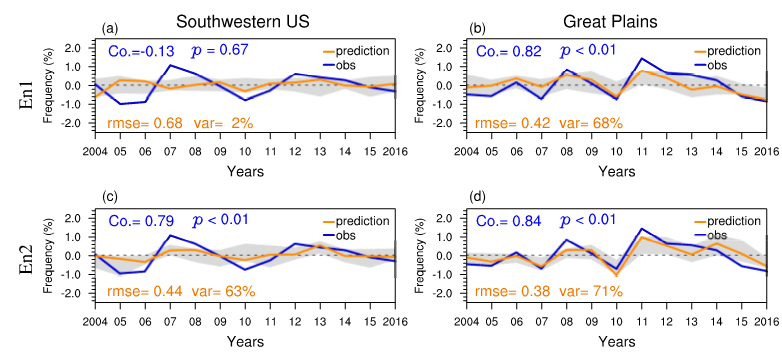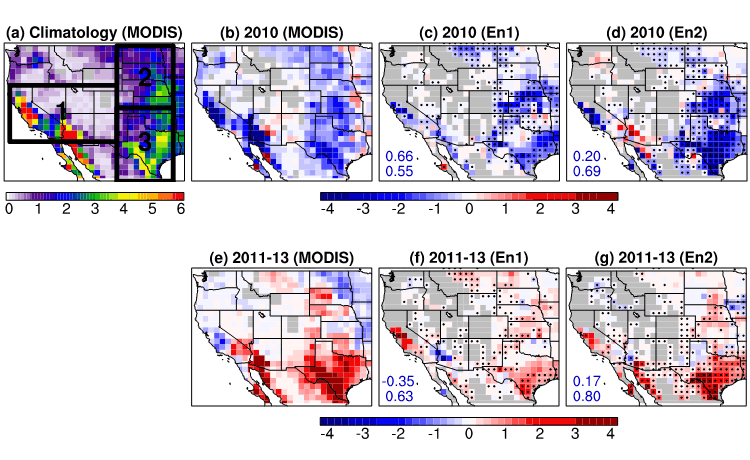July 29th, 2019
Key Findings
- A regression model and ensembles from a seasonal prediction model (GFDL FLOR) initialized on December 1st are used to predict springtime dustiness.
- About 71% of the variances of dustiness over the Great Plains and 63% over the southwestern U.S. from 2004 to 2016 are captured.
- Interannual variations in springtime dustiness are dominated by springtime climatic factors rather than wintertime factors.
Bing Pu, Paul Ginoux, Sarah B. Kapnick, Xiaosong Yang. Geophysical Research Letters. DOI: 10.1029/2019GL083703
Severe dust storms reduce visibility and cause breathing problems and lung diseases, affecting public health, transportation, and safety. Reliable forecasts for dust storms and overall dustiness are important for hazard preventions and resource planning. Most dust forecast models focus on short, sub-seasonal lead times, i.e., three to six days, and the skill of seasonal prediction is not clear. In this study we examine the potential of seasonal dust prediction in the U.S. using an observation-constrained regression model, with key variables predicted by a seasonal prediction model, GFDL’s Forecast-Oriented Low Ocean Resolution (FLOR).
This is the first time that U.S. seasonal dust prediction has been explored using a hybrid method that combines a statistical model and results from a dynamic seasonal prediction model. Our method shows skillful predictions of spring dustiness three to six months in advance. The regression model captures about 71% of the variances of dust event frequency over the Great Plains and 63% over the southwestern U.S. in March-May from 2004 to 2016 using predictors from FLOR initialized on December 1st. These findings will help development of a seasonal dust prediction and hazard prevention system.




